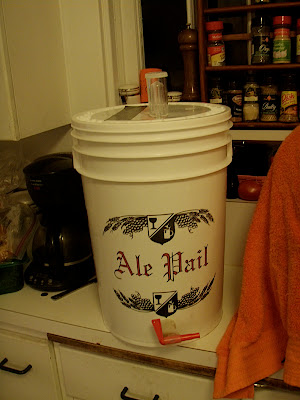I have heard that some brewers separate a small amount of wort from the main batch at the beginning of the fermentation and use this to test SG. Does this work?
No, it really doesn't work. That "satellite fermenter" idea will only tell you WHAT YOUR BEER WILL FINISH AT,
NOT when your 5 gallon batch of beer will be done.
It's used to measure attenuation of the yeast,
not rate of fermentation.
It will take yeast a lot less time to chew through 12 ounces of wort than it will 5 gallons.....so don't trust that silly thing that someone came up with because they are too afraid to take samples from their beer as being accurate.
If you do take that as "gospel" you more than likely are rushing your beer off the yeast way to soon. You know "bottle Bombs" or suddenly posting an "is my beer in secondary ruined?" thread because now that you moved it to secondary because the "satellite" said it was done, you now have this scary looking growth that you have never seen in your bucket (because the lid is one) that suddenly grew on top of your wort and is ugly as sin....which we of course will tell you to rdwhahb because that is just krausen and it formed because you racked too soon and the yeast is still trying to work to make beer for you.
The idea came from commercial breweries, but you have to realize when they are using in it a 3 or 7 or 10bbl fermentaion setup, that their sattelite looks like this.
And they are drawing off hydro sample out of that bucket just like we do.
And they are STILL going to be taking readings and tasting the REAL beer in the ACTUAL FERMENTER, before making any determination.
It's been adopted by some home brewers, and unfortunately gets perpetuated by people (mostly noobs scared of taking real hydro readings) but it's about as accurate as airlock bubbling, (and you know where I count that in terms of fermentation gauges- slightly below the astrological calender

)
Please don't fear taking a real hydro sample of your beer, don't ever go by a satellite grav reading.....Or an airlock....





